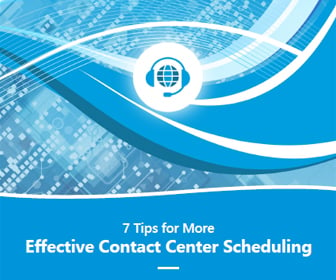Workforce Management Featured Article
Allowing Younger Workforces to Engage with Workforce Management on Mobile Devices
Today, most organizations have rather one-size-fits-all policies when it comes to managing their workforce. It makes sense: tailoring a management policy to each individual worker would be difficult, costly and cumbersome. But it’s worthwhile to remember that some workers are going to be more comfortable with workforce technologies than others. While their level of comfort isn’t always predicted by their age, it’s often true that younger workers are simply more comfortable with all manner of technology.
While the contact center industry and the restaurant industry may not have much in common on the surface, it’s worth taking a deeper look: in both industries, turnover is high and the workforces tend to be young. High volume makes efficient management of these workforces via technology a time and money-saver. Writing about the restaurant industry for Fast Casual, contributor Alicia Kelso noted that technology, particularly wireless technology, has a significant role to play.
“Emerging technology has also allowed operators to develop labor management efficiencies,” she wrote. “Restaurant franchisees, for example, can now keep track of payroll and HR paperwork in the cloud, and incorporate mobile scheduling. In an industry with a notoriously high turnover rate and continuous pressures, improving labor management is one relatively simple solution to offset some added costs.”
Kelso noted that Workforce Insight, a workforce management strategy and implementation consultancy, found that technologies that create mutual accountability due to team-based interaction, such as an integrated scheduling planning process, is becoming vital to involve the digitized generation. In other words, involving employees in the scheduling process by allowing them to interact digitally with workforce management solutions on their smartphones raised their level of engagement. Flexibility to make adjustments with schedules (within reason) can make them feel more in control of their jobs. (Bidding for overtime, for example, or requesting time off.)
In the call center industry, a little bit of employee engagement and satisfaction can go a long way toward improving retention and even the quality of customer support interactions. By choosing a solution with a mobile engagement feature, companies can allow workers to check their schedules on their devices, eliminating confusion and missed shifts. It can also allow mobile knowledge workers to be folded into the overall customer support organization from anywhere they’re located. Managers, too, can reap benefits from mobile workforce management: by replacing paper-based or desktop systems with mobile devices, companies can allow managers to handle training, scheduling, task and communications all on a portable device, from anywhere they happen to be.
It’s an often-heard complaint today that young people are glued to their smartphones, and research has found this to be largely true. For a young workforce such as that of the contact center industry, allowing the Millennial generation to better engage with their jobs via wireless device is a good step toward keeping them connected with their jobs.
Edited by Stefania Viscusi







